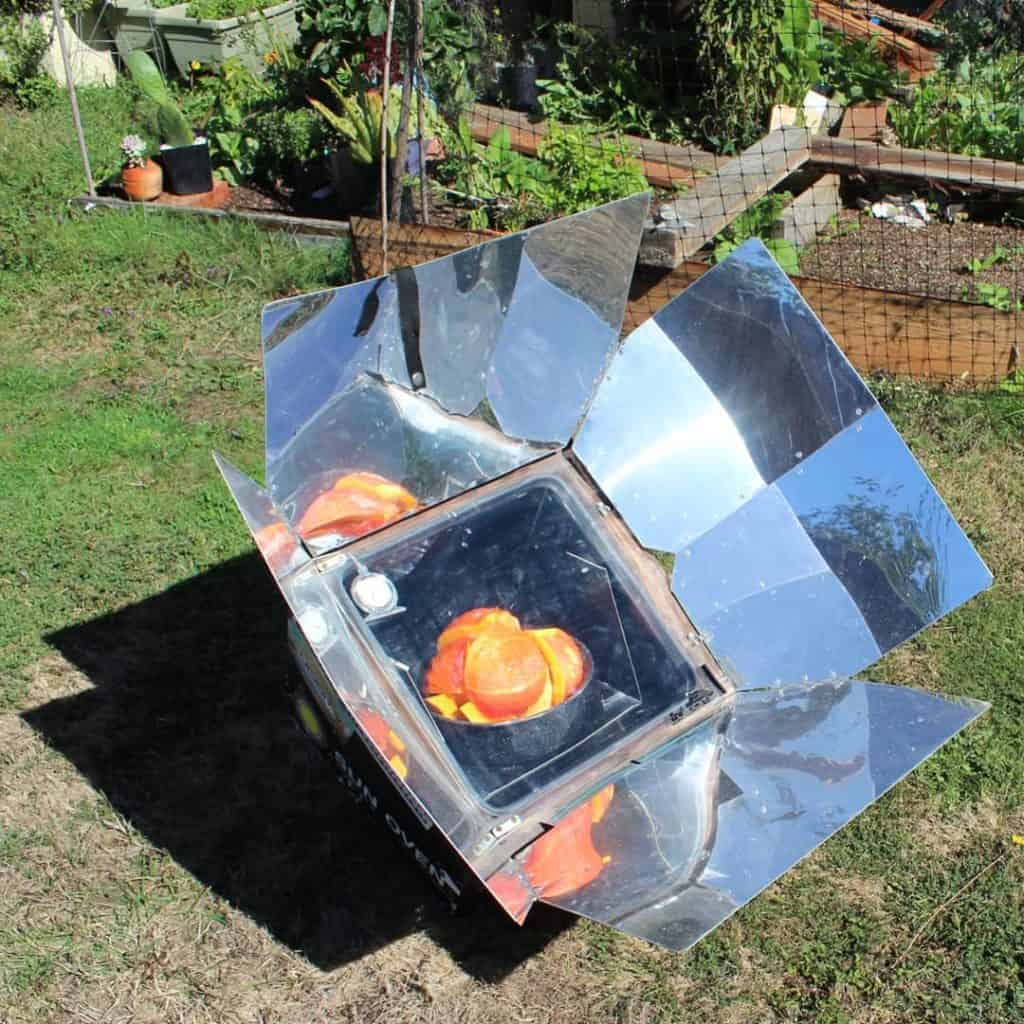Solar Cooking: Harnessing the Power of the Sun for Sustainable Living
In today’s world, where sustainability and self-sufficiency are becoming increasingly important, solar cooking has emerged as a practical and eco-friendly solution. By harnessing the power of the sun, this innovative cooking method offers numerous benefits to those living in rural areas or seeking an off-grid lifestyle. In this article, we will explore the concept of solar cooking, its advantages and limitations, various types of solar cookers available in the market, as well as some delicious recipes that can be prepared using this renewable energy source.
Understanding Solar Cooking:
Solar cooking is a technique that utilizes sunlight to heat food and cook meals without relying on traditional fossil fuels such as gas or electricity. The primary principle behind solar cookers is converting sunlight into heat energy through reflectors or concentrators. These devices efficiently trap and direct sunlight onto a cooking vessel, thereby achieving high temperatures necessary for various culinary tasks.
Advantages of Solar Cooking:
1. Environmental Friendliness: One of the most significant advantages of solar cooking lies in its minimal environmental impact. Unlike conventional methods that contribute to greenhouse gas emissions and deforestation due to fuel consumption (wood/charcoal), solar cookers rely solely on renewable energy from the sun.
2. Cost Savings: By opting for solar-powered cooking solutions, individuals can reduce their reliance on costly fossil fuels or electricity bills associated with traditional stoves or ovens. Although there may be initial investment costs when purchasing a solar cooker, long-term savings are notable.
3. Health Benefits: Traditional indoor biomass stoves often release harmful smoke during combustion leading to respiratory problems among users. Solar cookers eliminate these health risks by providing a clean source of energy that doesn’t produce any smoke or toxic fumes.
4. Energy Independence: For those living in remote locations without access to reliable grid connections or fuel supplies, solar cooking provides an opportunity for greater independence from external resources. This can be particularly advantageous for rural communities or homesteaders aiming to live a self-sufficient lifestyle.
Types of Solar Cookers:
1. Box Cookers: These are the most common and easily accessible solar cookers in the market. They consist of an insulated box with a transparent lid that allows sunlight to enter while preventing heat loss. The interior is usually painted black to absorb maximum heat, and reflectors on the sides enhance energy concentration.
2. Parabolic Cookers: Parabolic dish cookers use a curved reflective surface that concentrates sunlight onto a focal point at the center of the dish. With their ability to generate high temperatures rapidly, parabolic cookers are ideal for frying, boiling, or sautéing food quickly.
3. Panel Cookers: Similar to box cookers, panel cookers also rely on an insulated box design but include reflective panels instead of reflectors around the cooking vessel. These panels concentrate sunlight onto the pot or pan placed inside for an efficient cooking process.
4. Solar Ovens: Solar ovens resemble traditional ovens in terms of their design but operate solely on solar energy without any additional power source required. They often consist of a transparent glass top and reflective surfaces inside to capture and trap sunlight effectively.
Recipes for Solar Cooking:
Solar cooking offers versatility beyond our initial expectations, allowing us to prepare various dishes ranging from simple staples to more elaborate meals:
1. Sun-Baked Bread:
Ingredients:
– 4 cups all-purpose flour
– 2 teaspoons instant yeast
– 2 teaspoons salt
– 2 cups warm water
Instructions:
Mix all ingredients in a bowl until well combined and knead briefly until smooth dough forms.
Cover with plastic wrap and let it rise for about one hour.
Shape into desired loaf shape and place it in your solar oven.
Bake under direct sun exposure for approximately 1-2 hours or until golden brown.
2. Vegetable Ratatouille:
Ingredients:
– 1 eggplant, diced
– 2 zucchinis, sliced
– 1 red bell pepper, chopped
– 1 yellow bell pepper, chopped
– 1 onion, thinly sliced
– 4 cloves garlic, minced
– 2 tomatoes, diced
– Fresh thyme leaves (to taste)
– Salt and pepper (to taste)
Instructions:
Combine all ingredients in a large pot or casserole dish suitable for solar cooking.
Place the dish in your solar cooker and cook for approximately 3 to 4 hours or until vegetables are tender.
3. Solar-Baked Apple Crisp:
Ingredients:
For the filling –
– 4 apples, peeled and sliced
– Juice of half a lemon
– ¼ cup granulated sugar
– 1 tablespoon flour
For the topping –
– ½ cup rolled oats
– ¼ cup all-purpose flour


Leave a comment